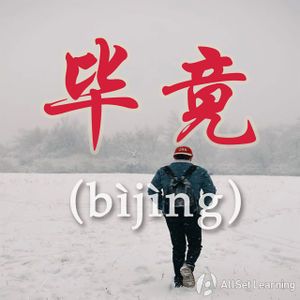Expressing "in the end" with "daodi"
-
Level
-
Similar to
-
Used for
-
Keywords
到底 (dàodǐ) literally means "to the bottom", and often is used where the speaker wants to get to the bottom of a problem or issue, emphasizing or questioning what the real reason for something is.
Contents
到底 as 毕竟 or "in the end"
It is often used like 毕竟, to mean "after all" or "in the end". When used in this way, 到底 is used to emphasize a reason or characteristic the speaker considers to be most important.
Structure 1
到底 + reason/characteristic
Examples
- 他 到底 是 个 大 老板,出手 很 大方 。 "He is a high-level boss, after all...")
- 他 到底 是 个 高手,你 很 难 跟 他 比 ! "He is a master, after all...")
Structure 2
虽然 + A + 但 + 到底 + B + C
In this structure, A and B are reasons or characteristics, and C is a result or conclusion. For this one, although it's possible to use 到底, 毕竟 is definitely the more common choice, so for examples of this usage, see expressing "after all" with "bijing".
到底 as 究竟 or "on earth"
到底 can be used to mean "on earth", where it is used to emphasize a question. In this sense, 到底 is similar to 究竟.
Structure
到底+question phrase
Examples
- 你 到底 怎么 了?What on earth is up with you?
- 到底 怎么 走?How on earth do we get there?
- 内奸 到底 是 谁?Who on earth is the mole?
- 你最低价 到底 是 多少?我 不 想 跟 你 讲价! Come on, give me your lowest price, I'm not in the mood for haggling
Note that 到底 cannot appear in an answer to a question. Also, 吗 cannot appear in a question formed with 到底 but 没有 can be used instead:
- 你 到底 吃 了 没有 ?
- 你 到底 吃 了 吗 ?
See also
Sources and further reading
Books
- Chinese Grammar - Broken down into 100 items - Basic and Intermediate Levels (汉语语法百项讲练 - 初中级) (pp. 127-33) →buy
- Boya Chinese Lower Intermediate 2 (博雅汉语准中级加速篇) (pp.183-5) →buy



